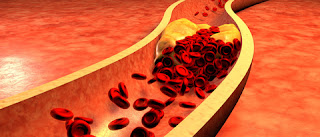I normally talk about the wonders of alkaline ionized water,
but today I’m going to give you 50 uses for acid ionized water. Just as a
caution, acid water is not to be consumed. Click here to learn more about the uses of ionized water.
There is both mild (4-5 pH) and strong (2.7-3.5 pH) acid
water. Mildly acidic water is for the skin,
hair and such, while the strong
acidic water is for disinfecting, cleaning, etc.
50 Uses for Acid
Water
Personal Hygiene:
1.
To lessen the appearance of lines and
wrinkles on the face. Speeds up skin renewal process.
2.
As a skin toner.
3.
To lessen the appearance of age spots.
4.
For dry skin patches or rough skin.
5.
Carry a bottle around and use as a hand
sanitizer. It will not dry the hands out.
6.
To replace expensive skin moisturizers
and creams.
7.
As a hair conditioner.
8.
For skin rashes or baby diaper rash.
9.
To prevent shaving bumps.
10.
As an aftershave.
11.
For poison ivy and other plant rashes.
12.
On skin for eczema. Spritz three
times a day and let air dry.
13.
On skin for psoriasis.
14.
On skin for rosacea.
15.
For dandruff. Use as a final rinse.
16.
For acne of every type. Spritz on
after washing and let air dry.
17.
To lessen the appearance of scars.
18.
To spray in shoes to disinfect and
deodorize.
19.
In place of deodorant
20.
Pour into bath water to soften skin.
21.
Spritz on face for a refreshing pick me
up.
22.
As a soak for sore rough feet.
23.
For athlete's foot.
24.
For jock itch.
25.
For female yeast infections and other
female issues.
26.
For toe fungus.
27.
For ingrown toenails.
Internal Hygiene:
1.
As a mouthwash and gargle.
2.
As a toothpaste.
3.
For pink eye.
4.
For ear infections.
5.
For infected tooth or gums.
6.
As a gargle for a sore throat.
7.
As an enema.
8.
To treat bad breath.
Cleaning and Disinfecting:
1.
To sanitize bathrooms and kitchen
counters.
2.
On cutting boards.
3.
To spray directly in refrigerator for
foul odors.
4.
To spray on carpets and rubber bathtub
mats.
5.
As a streak free glass and mirror
cleaner.
6.
For cleaning wood floors (a light mist
is all that is needed).
7.
To clean dirt and grime all over the
house (removes fingerprints from drywall), etc.
8.
To sanitize the interior of your washer
and dryer.
9.
On household sponges to extend their
life and prevent foul odors.
10.
To spray into laundry baskets to kill
mold and fungi.
11.
To disinfect human and pet bedding.
12.
For auto glass.
13.
For chrome polishing.
14.
To sanitize phones.
15.
To sanitize computer keyboards (light
spritz).
What other ways do you use your acid ionized water? Feel
free to share them with us in the comments below. And if you have any questions on the
uses mentioned herein, feel free to contact me right away.



